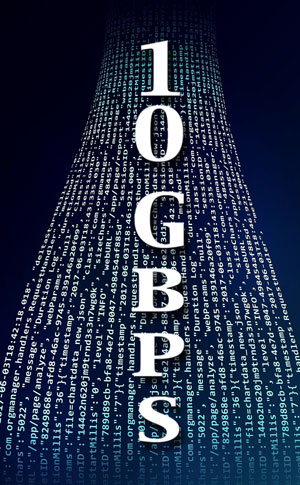Business WAN (Wide Area Network) bandwidth needs have accelerated, as more operations are moved to the cloud and more employees are working remotely. Fortunately, there are very good provider solutions available to create high bandwidth links from point to point and to the Internet.
 Fiber Optic Ethernet WAN
Fiber Optic Ethernet WANFiber optic connectivity is now clearly the gold standard for business bandwidth. If you are still using legacy T1 lines, ISDN PRI, or DS3 bandwidth, you are probably running out of bandwidth and likely headed for obsolescense. Many carriers are starting to decommission their copper-based services due to high maintenance costs and declining customer interest. It’s time to upgrade.
All fiber is not created equal, however. The legacy SONET technology introduced decades ago by the telephone companies is also getting long in the tooth. What’s better? The new standard is called Carrier Ethernet or Ethernet WAN.
Fiber Optic Ethernet WAN is an extension of the switched Ethernet standard used on virtually every Local Area Network. The technical standards make it easy to connect the LAN to the WAN without going through any intermediate protocol conversions. It’s Ethernet from end to end. This is the standard that most every service provider is offering, including many of the legacy telephone companies that have adopted it for their own networks.
Advantages of Fiber Ethernet WAN include ease of scaling bandwidth without having to change interface hardware. Order 10 to 50 Mbps starter service and easily upgrade to 100 Mbps or 1 Gbps, usually by using an online portal or making a phone call. Truck rolls are seldom needed unless you are ordering service beyond what your terminal equipment can handle.
Pricing is very attractive. You can start with lower bandwidth services from 10 Mbps to 100 Mbps and likely pay the same or less than you pay now for your copper based services. You almost always get more bandwidth for the same cost or pay less for the replacement bandwidth at the same service level.
Cost savings are even more dramatic as you go up in bandwidth. The cost per Mbps or Gbps compared to legacy solutions gets lower and lower as you go up in speed. Costs have also been dropping over time as technology improves, carriers build-out fiber runs, and competition increases. If you have a contract that is more than a few years old, you can likely save money with a new service.
Multi-Gigabit Solutions
There was time, and it was only a few years ago, that 1 Gbps or 1,000 Mbps broadband or private line service was the holy grail of connectivity. Not anymore. Fiber isn’t rare the way it used to be. It’s very common, now, to have fiber running extensively in metro business areas. Often there are multiple competing providers that result in very attractive pricing.
Fiber build-outs are multiplying, as more and more businesses demand higher and higher bandwidths and cell towers are upgraded to support millimeter wave 5G cellular service.
1 Gigabit bandwidth is common for business, with more demanding applications upgrading to 10 Gigabit service. The next move is to 100 Gbps Fiber Optic Ethernet WAN. Although that may seem ridiculously high for smaller businesses, it is not unreasonable for large hospital campuses and medical centers with multiple imaging facilities. Other high users are universities, research laboratories, government entities, video production houses, architectural firms and manufacturers. With 5G wireless supporting bandwidths in excess of 1 Gbps and cable companies offering at least that much to consumers, 10 Gbps is quite reasonable for highly automated businesses that have made the transition to digital. 100 Gbps is simply the next logical increment.
Dark Fiber and Fixed Wireless Access
Lit fiber optic WAN is likely to remain the standard for business for the foreseeable future. However, there are special situations where related technical solutions make sense.
Dark Fiber is an option for businesses that want more control of their connections, almost as if they owned the link themselves. Many network providers have extra unlit fiber strands in their cables available for spares and future expansion. They may be willing to lease an entire fiber strand or a wavelength on one of the strands. What is available depends on the locations you wish to link. Advantages of dark fiber include being able to run any protocol you wish and the enhanced security of being the only user on a particular fiber or wavelength.
Fixed Wireless Access (FWA) uses microwave frequencies instead of fiber to carry the traffic. Many cellular companies use FWA to backhaul traffic to their remote towers instead of having long and isolated fiber runs. Bandwidths can be in the Gigabit to 10 Gigabit range and offer dedicated private line service or connections to the Internet. Think of FWA as fiber without the physical fiber. You have an antenna on your building instead. A major advantage of FWA is that installation can be done in days versus months to have fiber trenched in were none is currently available.
Are you ready for a bandwidth upgrade from older copper services or expensive SONET fiber? Fiber Optic Ethernet WAN, Dark Fiber and Fixed Wireless Access may offer exactly what you need at better prices than ever before.




